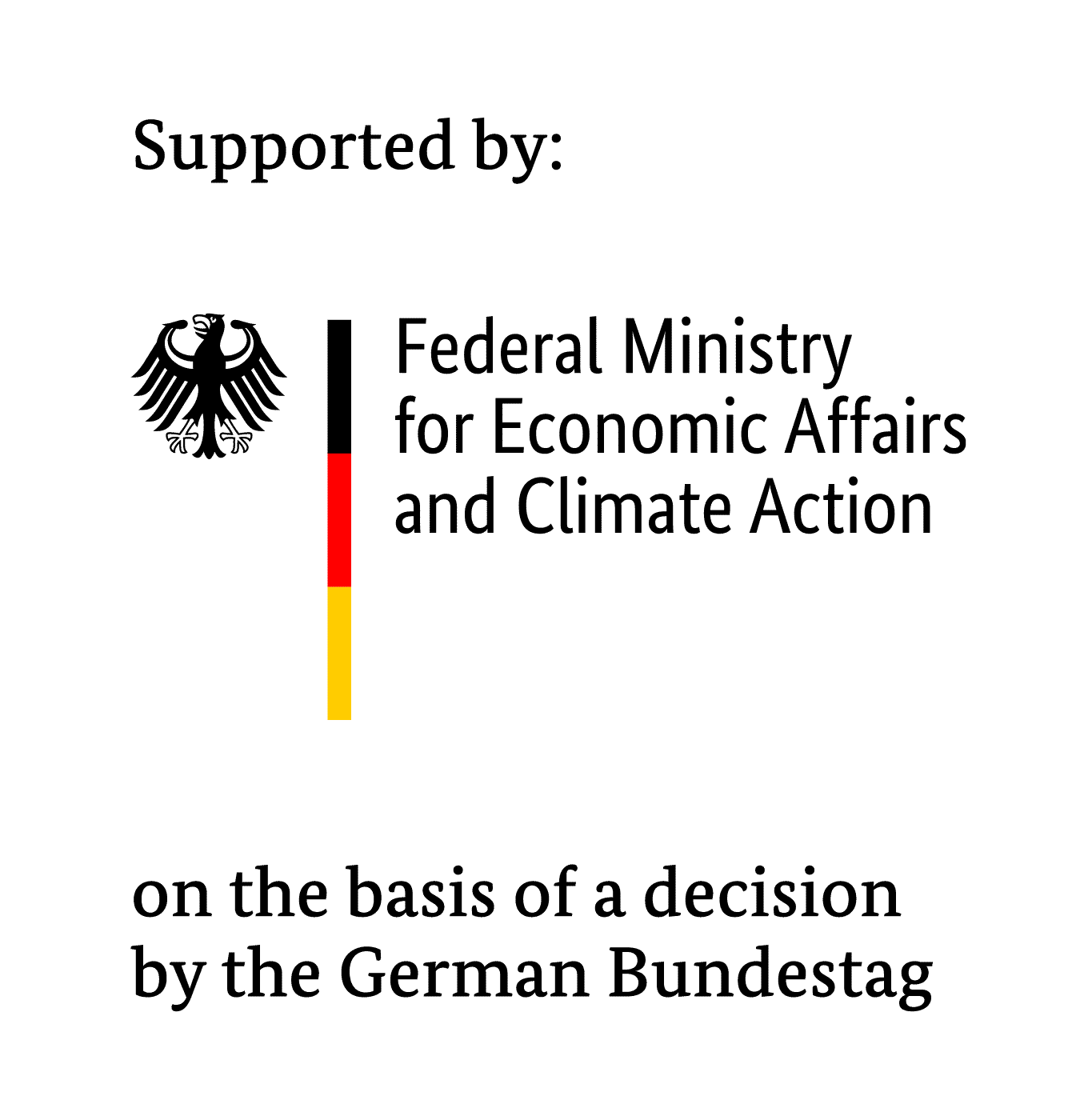EL-CELL GmbH is a project partner in various government-funded research projects. Here is an overview of the current projects:
Projects
SimDural – Simulation-based safety assessment of uncontrolled thermal runaway in aged battery cells (June 2022 – May 2025)
What is it about?
In the SimDural joint project, simulation models for the thermal runaway of lithium-ion batteries are being developed, validated, and parameterized based on experiments. Different aging states of the battery cells are taken into account. Various analytical methods are used. Among other things, the reaction gases produced during the cycle are examined.
What are we doing?
EL-CELL is developing a special test cell as part of the project. This cell contains a heating element that can heat the battery stack to over 200 °C to simulate thermal runaway. At the same time, the test cell will provide various connections for continuous and discontinuous sampling of the gas chamber.
See also PAT-Cell-Gas.
Who is involved?:
- BMW
- Universität Münster, Instituts für Anorganische und Analytische Chemie
- Technische Universität Braunschweig, Institute for Particle Technology
- Justus-Liebig-Universität Gießen
- SGL Carbon GmbH
- Thermo Fisher Scientific
- M.Braun Inertgas-Systeme GmbH
This project is funded by:
SilKompAs – Silicon-based composite anodes for use in sulfide solid-state batteries (September 2022 – August 2025)
What is it about?
The SilKompAs project develops solid-state batteries with a sulphidic solid electrolyte and a silicon-carbon composite anode. Particular attention is paid to the composite anode: The project’s scope ranges from material synthesis in the laboratory to electrode processing at the pilot plant. In addition, various physical, chemical, and mechanical analyses are carried out on the test cells.
What are we doing?
EL-CELL is developing two test cells as part of the project. One enables the battery stack to be cycled under a high preload force while simultaneously measuring the force acting on the stack. The other is an extension of the already established electrochemical dilatometer ECD-4-Nano. The new cell enables direct dilatation measurement under a pre-set pre-tensioning force.
Therefore, both cells are compatible with the PAT system and can be operated cable-fee in the PAT-Tester-x-8.
See also: PAT-Cell-Force, ECD-4-Nano.
Who is involved?:
- Universität Münster, Instituts für Anorganische und Analytische Chemie
- Technische Universität Braunschweig, Institute for Particle Technology
- Justus-Liebig-Universität Gießen
- SGL Carbon GmbH
- Thermo Fisher Scientific
- M.Braun Inertgas-Systeme GmbH
This project is funded by:
BiSSFest – Bipolar stacking of sulfide solid-state batteries (December 2021-November 2024)
What is it about?
In the BiSSFest joint project, solid-state batteries with a sulfide solid electrolyte and lithium metal anode are being investigated. The focus is on developing scalable processes from laboratory to pilot scale. A special feature of the project is the stacking of individual battery cells connected in series using bipolar plates.
What are we doing?
EL-CELL is developing a special test cell as part of the project. This cell enables the battery stack to be cycled under a high preload force while simultaneously measuring the force acting on the stack. In addition, a connection for in-situ gas analysis is being created to investigate the reaction gases produced. The cell is compatible with the PAT system and can, therefore, be operated cable-free in the PAT-Tester-x-8.
See also: PAT-Cell-Force, PAT-Cell-Gas
Who is involved?:
- NETZSCH-Feinmahltechnik GmbH
- IBU-tec advanced materials AG
- Customcells Holding GmbH
- Technische Universität Braunschweig, Institute of Machine Tools and Production Technology
- Technische Universität Braunschweig, Institute for Particle Technology
- Fraunhofer Institute for Surface Engineering and Thin Films IST
- Universität Münster, Instituts für Anorganische und Analytische Chemie
- BASF SE
This project is funded by:
KeNaB-ART – Ceramic-based sodium battery with beta-aluminate for applications above room temperature (August 2021 – July 2024)
What is it about?
The KeNaB-ART project researches solid-state batteries with ceramic-based solid electrolytes and sodium metal anodes. In particular, this project is investigating battery cells for operation at elevated temperatures, some of which are above the melting point of the metal anode.
What are we doing?
EL-CELL is developing a special PAT-Core in this project. This PAT-Core is designed for use in the PAT-Cell-HT. Together with the PAT-Heater-4, batteries with liquid metal anodes can be investigated. The cells and the PAT-Heater are compatible with the PAT system and can, therefore, be operated with PAT-Tester-x-8.
See also: PAT-Cell-HT, PAT-Heater-4
Who is involved?:
- IBU-tec advanced materials AG
- Paul Rauschert GmbH & Co. KG
- Fraunhofer Institute for Ceramic Technologies and Systems IKTS
This project is funded by:
S³B – Materials and interface design for sodium solid-state batteries (April 2021 – March 2024)
What is it about?
In the international joint project S³B, solid-state batteries with sodium metal anodes and ceramic solid electrolytes are being developed in cooperation with German and Korean partners. A special feature of the project is integrating a specially developed polymer layer into the battery stack to modify interface effects.
What are we doing?
As part of the project, EL-CELL is developing a test cell in which the battery stack can be cycled under a moderate preload force. At the same time, the force acting on the stack during cycling can be measured. This means that a fluctuation in the force can detect the change in thickness of the active materials when the state of charge changes.
The cell is compatible with the PAT system and can, therefore, be operated cable-free in the PAT-Tester-x-8. EL-Cell is also developing the PAT-Terminal, a stand-alone device for quickly reading out cell parameters to facilitate cell assembly in the glovebox.
See also: PAT-Cell-Force, PAT-Terminal-1.
Who is involved?:
This project is funded by:
Federal Ministry for Economic Affairs and Climate Action




